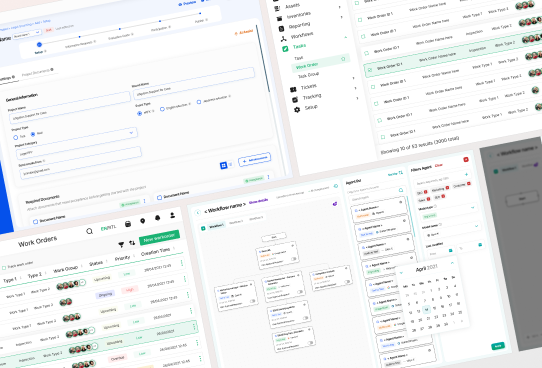Time On Task
<p>Time on task is a critical metric in user experience (UX) design and product development. It measures the amount of time a user spends to complete a specific task on a digital platform. Understanding this metric is essential for evaluating the efficiency and usability of a product, particularly in climate tech, where user engagement and swift task completion can significantly impact user satisfaction and adoption rates.</p>
<p>Historically, the concept of time on task has been rooted in human-computer interaction studies. It has evolved as a standard measure to gauge how well users can perform tasks with minimal effort and time. In today's fast-paced digital landscape, reducing time on task is crucial for enhancing the overall user experience, driving user retention, and achieving business goals.</p>
<h2>Importance of Time on Task in UX Design</h2>
<p>Time on task plays a vital role in UX design for several reasons:</p>
<ul>
<li><strong>Efficiency:</strong> Users prefer applications that allow them to complete tasks quickly. A lower time on task indicates a more efficient and user-friendly design.</li>
<li><strong>User Satisfaction:</strong> Efficient task completion leads to higher user satisfaction. Users are more likely to return to a platform that offers a seamless experience.</li>
<li><strong>Conversion Rates:</strong> In e-commerce, for example, faster checkout processes can lead to higher conversion rates and increased sales.</li>
<li><strong>Cost Reduction:</strong> For companies, a more intuitive design can reduce the need for extensive customer support, thereby cutting operational costs.</li>
</ul>
<h3>Factors Affecting Time on Task</h3>
<p>Several factors can influence the time users spend on a task:</p>
<ul>
<li><strong>Interface Design:</strong> A clean, intuitive interface can significantly reduce time on task. Elements such as clear navigation, concise instructions, and logical layout are crucial.</li>
<li><strong>Task Complexity:</strong> Simpler tasks naturally take less time. Breaking down complex tasks into smaller, manageable steps can help reduce overall task time.</li>
<li><strong>User Familiarity:</strong> Frequent users of a platform will typically complete tasks faster than new users. Providing tutorials and guided tours can help new users acclimate quickly.</li>
<li><strong>Technical Performance:</strong> Fast loading times and responsive design ensure users are not delayed by technical issues.</li>
</ul>
<h3>Case Study: Climate Tech Company</h3>
<p>A notable example of optimizing time on task can be seen in a climate tech company specializing in carbon footprint tracking. Initially, users reported spending over 10 minutes inputting their data and generating reports. By redesigning their interface to include auto-fill options, real-time data syncing, and streamlined navigation, the company reduced the average time on task to under 5 minutes. This not only improved user satisfaction but also increased the frequency of use, as users found the tool more convenient and efficient.</p>
<h3>How to Measure Time on Task</h3>
<p>Measuring time on task can be done through various methods:</p>
<ul>
<li><strong>User Testing:</strong> Conducting usability tests where users complete specific tasks while being timed. This method provides direct insight into task completion times.</li>
<li><strong>Analytics Tools:</strong> Utilizing tools like Google Analytics or [Hotjar](https://www.hotjar.com) to track user interactions and time spent on different sections of the platform.</li>
<li><strong>Session Recordings:</strong> Analyzing session recordings to observe how users navigate and identify areas causing delays.</li>
</ul>
<h3>Improving Time on Task</h3>
<p>To reduce time on task and enhance user experience, consider the following strategies:</p>
<ul>
<li><strong>Simplify Navigation:</strong> Ensure users can find what they need quickly with a logical and intuitive navigation structure.</li>
<li><strong>Use Visual Hierarchy:</strong> Highlight important elements and actions to guide users through tasks efficiently. Leveraging visual hierarchy can significantly impact task completion times.</li>
<li><strong>Optimize Forms:</strong> Minimize the number of fields in forms and use features like auto-complete and inline validation to streamline the process.</li>
<li><strong>Provide Feedback:</strong> Offer immediate feedback on actions to keep users informed and reduce uncertainty.</li>
</ul>
<p>Reducing time on task is not just about making tasks quicker; it's about creating a more intuitive, user-friendly experience. By focusing on this metric, companies can build more efficient digital products that delight users, drive engagement, and achieve business objectives.</p>
<p>If you want to delve deeper into improving your design strategies, consider exploring our comprehensive guide on <a href="https://www.nngroup.com/articles/how-to-conduct-a-ux-audit/" style="color: #2896FF; text-decoration: underline;">conducting UX audits</a> and leveraging data-driven insights to enhance user experience.</p> <p>To understand the power of design across industries and sectors, view our diverse portfolio of works. <a href="https://www.whatifdesign.co/work" style="color:#2896FF; text-decoration:underline;">View our portfolio</a>.</p> <p>Increase user engagement that converts your demos into sales. Optimise your UX strategies with our audits.
<p>Fill out the <a href="https://tally.so/r/n97pxQ" style="color:#2896FF; text-decoration:underline;">UX Audit form</a> to get started. Ready to discuss your needs? <a href="https://cal.com/akhilak/what-if-design?duration=25" style="color:#2896FF; text-decoration:underline;">Book a consultation call</a> with us today.</p></p>

Let's scale your impact with great design.
Free consultation, no sales pitch
Thank you! Your submission has been received!
Enter you email correctly!
Let’s talk
Nothing great is built alone.
Let’s connect about your vision, our work and how we can collaborate.
Get in touch
© 2025 What if Design
Stripe climate partner

